As the consumer market becomes increasingly diverse and complex, brands face a significant challenge in reaching and engaging multiple generations. From newborn Gen Beta to the mature Baby Boomers, each generation has distinct characteristics and priorities that marketers must understand.
Gen Beta, the cohort of children born from 2025 onward, has already made its debut in a new Prudential advertisement created by McCann New York. According to Richard Parkinson, Prudential’s Brand Director, early engagement with this generation is crucial: “We want to show that we are relevant to the generations of the future. Particularly with Gen Beta, we aim to help them navigate an increasingly challenging world.”

However, Gen Beta is not the only generation that brands need to pay attention to this year. Older generations are reaching important milestones that impact how marketers communicate with and advertise to them.
Gen Alpha, born from 2010, is entering adolescence with increasing influence and earning potential. Meanwhile, Gen Z, born from 1997, is approaching their 30s, facing new life stages such as marriage and homeownership. Gen X, even though some members will be turning 60, is still considered a group with a youthful mindset and energetic spirit.
Jennifer Brace, Futurist at Ford Motor Company, shares, “We always monitor trends outside the automotive industry to better prepare for the needs of future consumers. For the older generations, we’re looking at how their needs are changing and how to connect with them authentically and respectfully.”
The year 2025 is expected to be a pivotal one as brands continue to adjust their strategies to effectively reach every generation, from newborns in Gen Beta to the elderly in the Baby Boomer generation. Understanding the characteristics, priorities, and life stages of each generation can help brands build long-term relationships and attract loyal customers.
- Gen Beta
Named in order of the Greek alphabet, Gen Beta includes children born from 2025 to 2039, succeeding Gen Alpha.
Experts suggest that while Gen Alpha is growing up surrounded by electronic devices such as tablets, laptops, and smartphones, Gen Beta will be shaped by artificial intelligence (AI). Dani Mariano, President of Razorfish, comments, “For children born today, AI will become a natural part of their world, no longer something novel.”
However, Mark McCrindle, an Australian demographer who first coined the term Gen Alpha, notes that much of Gen Beta will be raised by Gen Z—those who have witnessed both the positive and negative sides of technology. He predicts that Gen Beta will grow up with more “digital barriers,” as their Gen Z parents focus on offline experiences like nature and direct social skills.

According to predictions by McCrindle, Gen Beta will make up approximately 16% of the global population by 2035, largely consisting of children of late Gen Y and early Gen Z parents.
This trend has already begun to emerge with the banning of phone usage in some schools and the development of technologies that limit phone use. For example, in 2021, Graham Dugoni created a device called Yondr, essentially a smartphone pouch with a lock. Users simply place their phones inside, and the pouch locks, only to be reopened with a large magnet. This device has been used in over 1,000 schools across the U.S., Canada, and Europe.
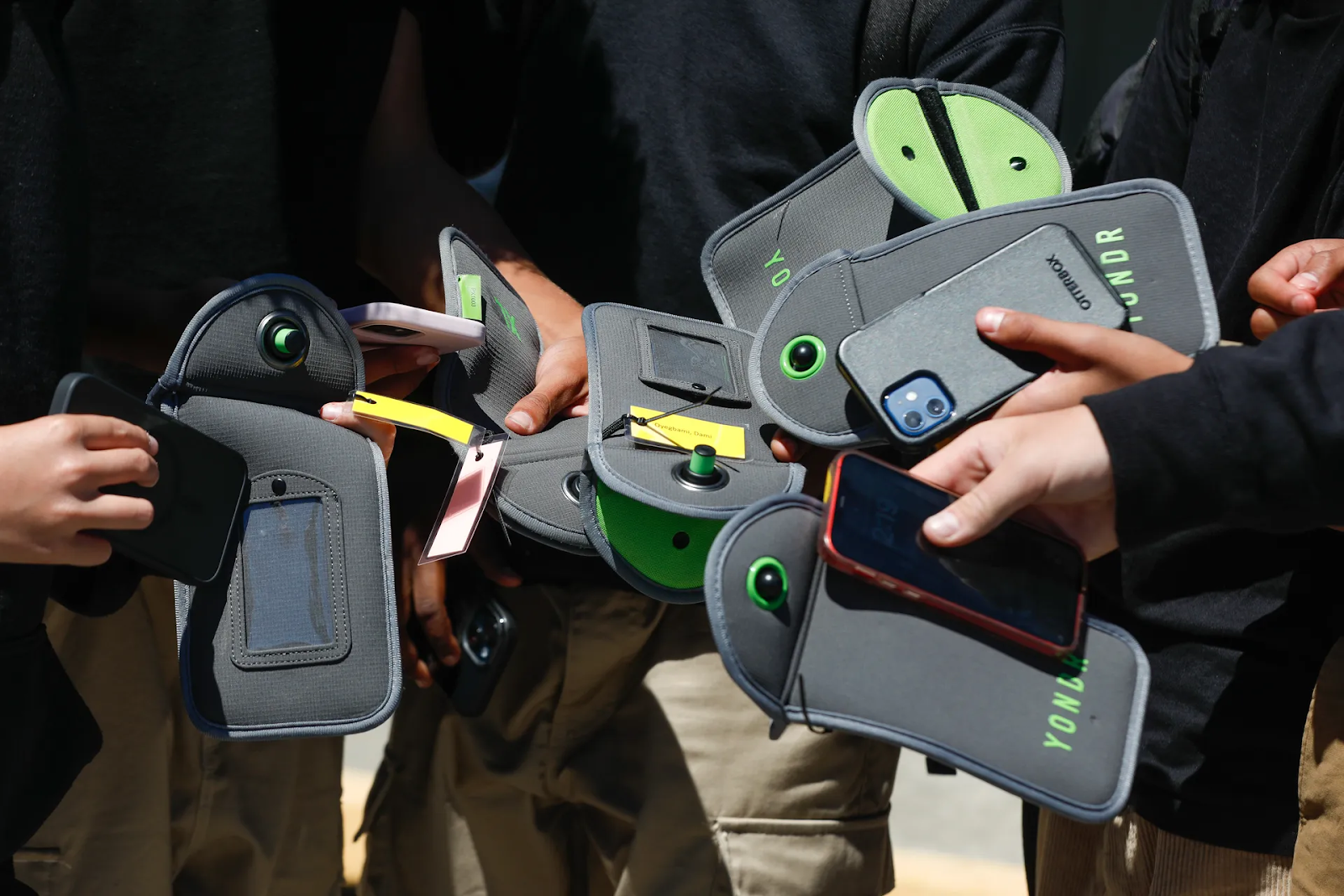
The introduction of the Yondr device is expected to reduce distractions in classrooms and limit the impact of social media on students’ mental health.
Notably, Mr. McCrindle also points out that the size of generations is shrinking due to global population changes. Gen Beta is expected to consist of just over 2 billion people, fewer than the 2.1 billion people in Gen Alpha. This means that brands need to be smarter in delivering their messages and targeting this demographic.
Many financial companies have started reaching out to Gen Beta with messages about saving support. For instance, SoFi recently sent an email to customers with the subject line “Gen Beta is here,” accompanied by an emoji of money with wings.
In the future, marketers will need to simplify their language and messages to reach younger generations in an increasingly diverse and complex media landscape. Engaging Gen Beta will also require brands to have creative marketing strategies that align with the new technological environment and meet the needs of a generation growing up with AI but potentially more cautious about technology.
- Gen Alpha
According to marketing experts, Gen Alpha (born between 2010 and 2024) is increasingly influencing household purchasing decisions. By 2025, when the first members of this generation begin earning from part-time jobs, their shopping potential is expected to be further strengthened.
Monica Mariano, an expert in the field, notes, “Gen Alpha has an extremely strong influence. Marketers need to think about the overall experience, every brand touchpoint, and conversion experience, as well as how they affect a child’s decision, which in turn influences the decisions of parents.”
Many families today rely on the opinions of Gen Alpha children for shopping decisions, from dinner choices and restaurant selections to larger purchases like homes and cars. For this reason, the famous automaker Ford has continuously monitored and adjusted its products to meet the needs of this generation. For example, after noticing that Gen Alpha children prefer to bring their own devices into vehicles, Ford removed the rear-seat screens and added charging and connection points for phones, game controllers, and tablets in the new family Expedition vehicles.
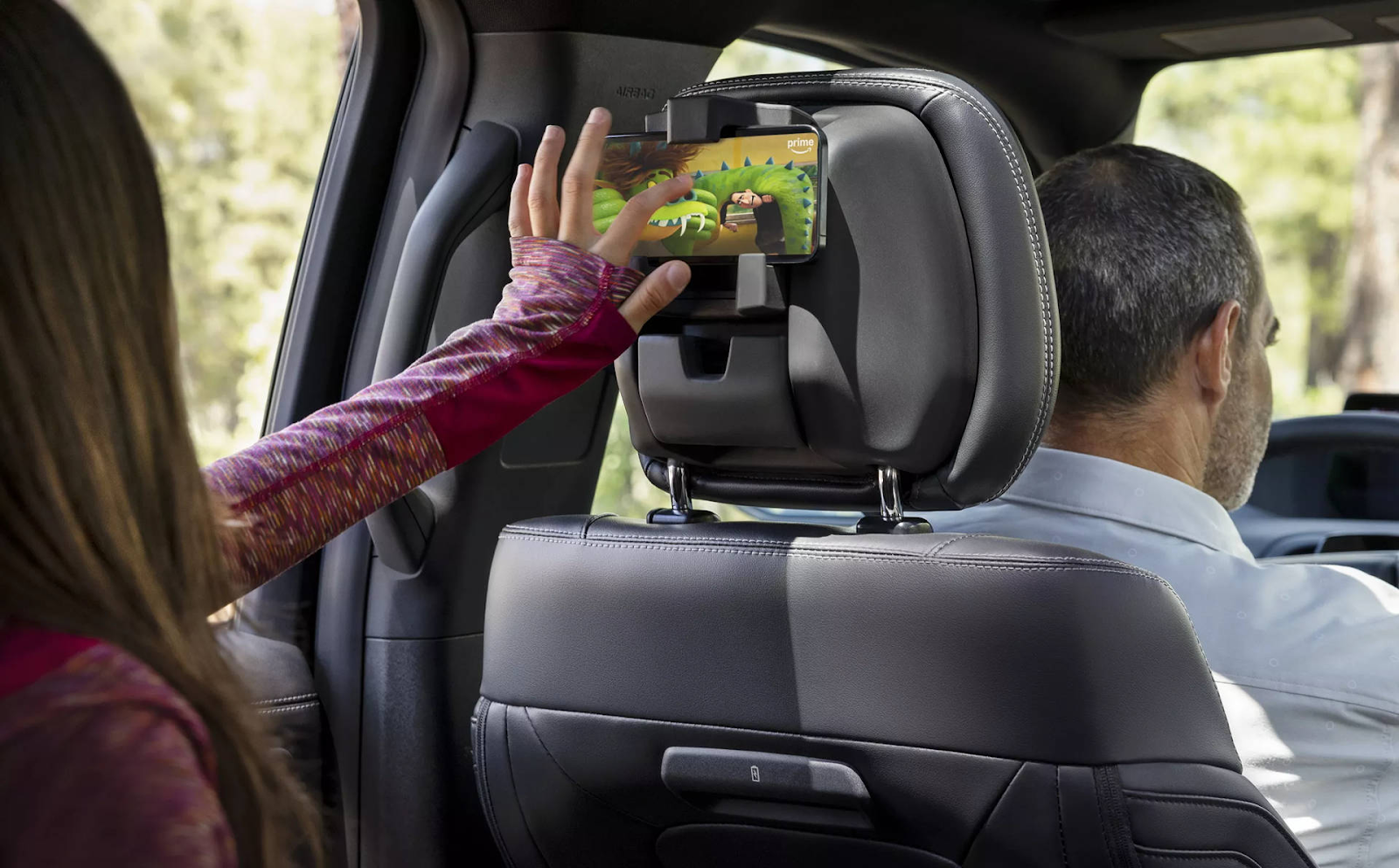
Ford’s product designs are gradually being influenced by Gen Alpha.
Brace, a representative from Ford, shares, “There is more involvement and decision-making from younger generations, and considering their opinions is valuable. It helps if we know they think we are ‘cool’ or interesting.”
Gen Alpha also has more diverse interests than previous generations. Mariano estimates that, on average, each child in this group has about 10 to 12 hobbies, double the number of interests of Gen Z at the same age. Many of these interests are becoming more profound, thanks to this generation’s reliance on YouTube, a platform that recently ranked #1 in the “Coolest Brand” report by Beano Brain, a trend agency based in the UK.
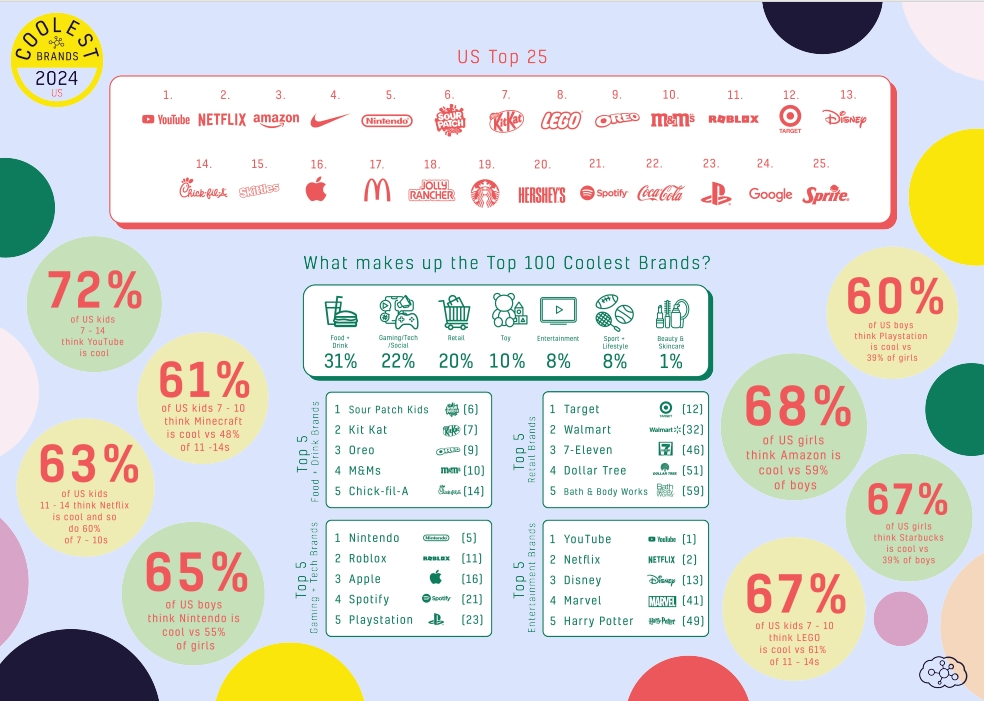
YouTube Leads the Pack as the “Coolest Brand” for Gen Alpha in 2024
Cathy Hackl, CEO of Future Dynamics, a forecasting and exploration lab, states that Gen Alpha will continue to spend money on virtual assets, flocking to gaming platforms like Roblox and Fortnite, even more so than on social media platforms like Instagram and Snapchat.
At the same time, Hackl highlights the expected growth of in-game shopping for physical goods in the future. “Many transactions are happening through gaming, exploring music. All these activities in that space are influencing shopping and culture. Brands should double down on investing in the gaming space rather than retreating,” she says.
- Gen Z
As Gen Z enters adulthood, marketers are adjusting their strategies to align with the evolving lifestyle and preferences of this customer group. According to Mariano, “We should no longer view them as teenagers. Many of our clients have focused too much on reaching Gen Z in their teens and early 20s, but the reality is they are growing up.”
Gen Z includes individuals born between 1997 and 2012. By 2025, Gen Z will range from 13 to 28 years old. They are entering new life stages such as purchasing cars, buying homes, and considering marriage. This creates opportunities for insurance companies like State Farm, which is focusing on this demographic by offering useful resources on their website.
Jenny Lewis, Chief Marketing Officer at The Knot Worldwide, says that 78% of Gen Z has taken at least one action related to weddings, regardless of their relationship status. This figure is significantly higher than the 60% for Millennials. Lewis explains that this enthusiasm is partly due to the role of social media in Gen Z’s daily life.
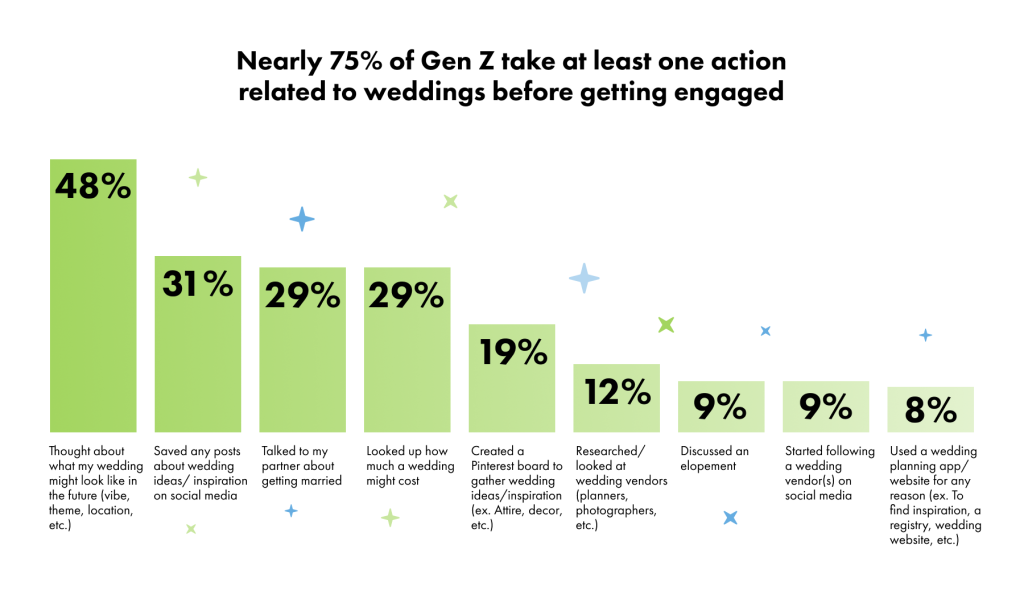
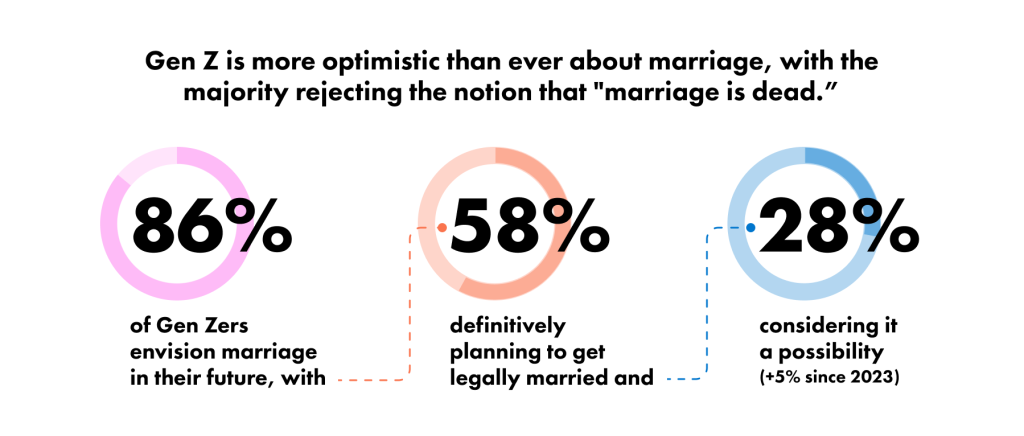
In 2025, reports predict that nearly 75% of Gen Z will take at least one step related to wedding preparations before officially getting engaged. At the same time, 86% of Gen Z desires to marry in the future as they reach the peak marriage age.
Financially, many Gen Z individuals have delayed full-time employment due to longer study periods, according to McCrindle. They tend to invest in riskier areas like cryptocurrency and NFTs. McCrindle observes, “They are willing to make their money work in ways that Gen X and Baby Boomers might consider unwise.”
Notably, Gen Z is no longer as closely tied to TikTok as before. A recent study by Raptive, a creative media company, shows that Gen Z is quickly shedding the title of “TikTok generation,” largely due to a lack of trust in social media content. Raptive also found that 38% of Gen Z respondents are skeptical about the reliability of social media posts.
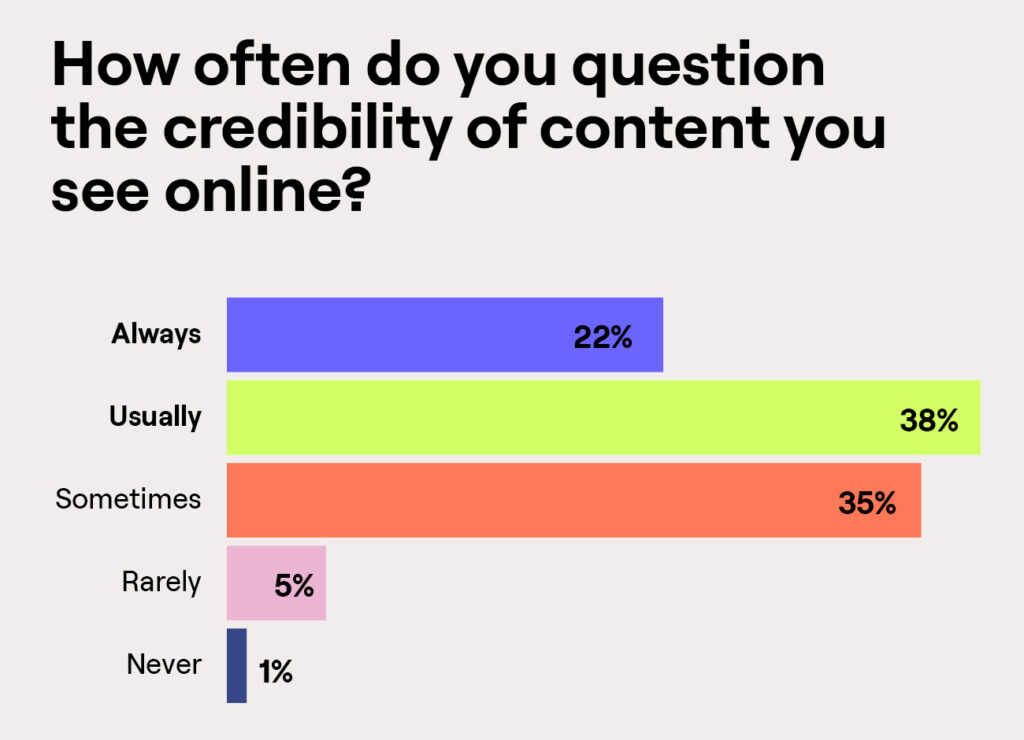
According to Raptive, 35% of Gen Z believes that most online content is fake or suspicious until proven otherwise, while 38% are more likely to be skeptical about the reliability of posts rather than trusting their actual value.
To effectively engage with the maturing Gen Z, brands need to adjust their marketing strategies. Instead of focusing solely on entertaining content, they should provide useful and reliable information on important matters such as finance, insurance, and life planning. Additionally, diversifying communication channels, not just limiting to TikTok, is a crucial strategy to capture the attention of this demographic.
- The Millennial Generation
In 2025, the Millennial generation (born from the early 1980s to the mid-1990s) will continue to be a key target audience for brands, particularly in the healthcare and technology sectors.
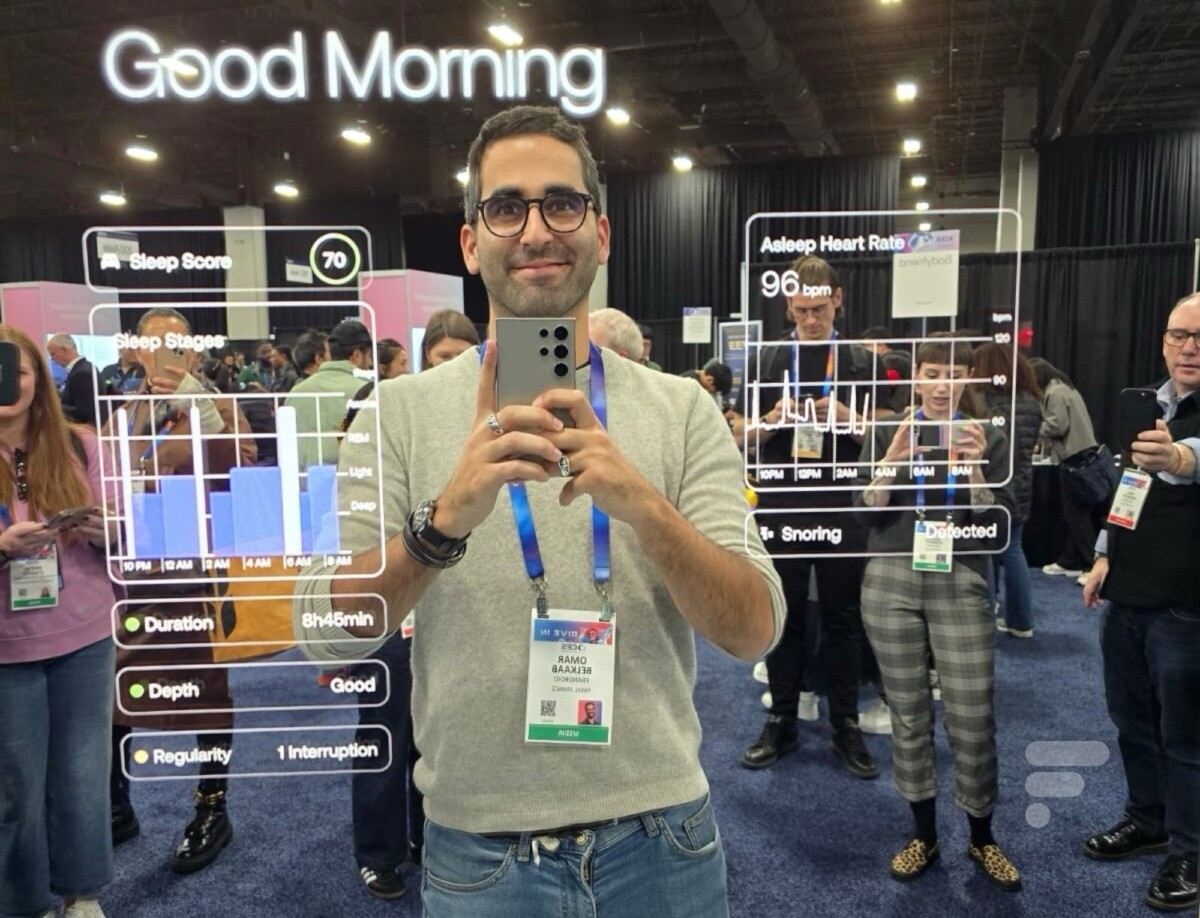
At CES 2025, manufacturer Withings unveiled the OMNIA smart mirror, which allows users to receive detailed health data and analysis, including cardiovascular health, body composition, and sleep quality.
Cathy Hackl commented that tech brands are focusing on developing products and services aimed at healthcare for this demographic. She particularly highlighted the demand for products tailored to women in the perimenopausal stage, a growing niche market of increasing interest.
“Brands will target Millennials with disposable income who are focused on healthy aging,” Hackl shared. She also noted that people aged 45 today are very different from previous generations. They are more active, healthier, and seeking brands that support their longevity lifestyles.
Additionally, according to Mariano, Millennials may also embrace new financial opportunities as wealth transfers from Baby Boomers. “Millennials will experience shifts in how they think about and use assets,” Mariano remarked.
Although Millennials may not hit any major milestones in 2025, they remain a highly promising group for marketers. With a growing focus on health, active lifestyles, and stable financial capabilities, this generation presents many new opportunities for brands to develop relevant products and services.
Brands must capitalize on these trends to create effective marketing strategies that meet the increasingly diverse and complex needs of Millennials in 2025 and beyond.
5. Gen X
Gen X, those born between the mid-1960s and the early 1980s, is entering a new phase in life with significant changes. This presents a large opportunity for marketers in various sectors in 2025, particularly in health and travel.
According to McCrindle, Gen X is living and working longer than previous generations. However, they have managed to maintain a youthful mindset even as they approach their 60s. McCrindle remarked, “This is the generation that went against the grain of their parents. They were the first self-reliant kids, the lazy ones who embraced the grunge culture. Now, they’re nearing grandparenthood, but their outlook doesn’t feel like that.”
Mr. Parkinson, a representative from Prudential and also part of Gen X, believes one of the reasons this generation retires later than previous ones is because they highly value social relationships at the workplace.
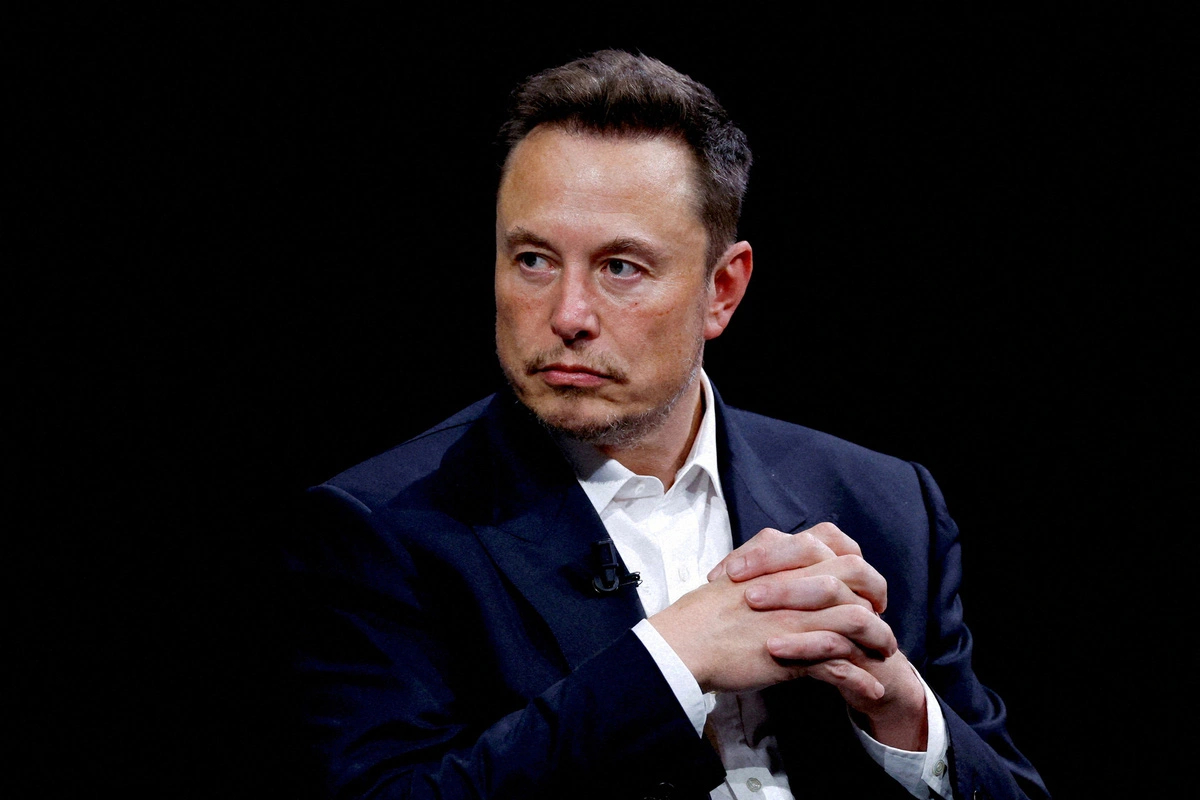
Elon Musk is a prime example of a successful individual from Gen X.
Similar to the Millennial generation, the aging of Gen X also creates opportunities for marketers in the healthcare sector. While marketing messages used to be less direct in the past, this approach is no longer taboo.
Mariano commented, “We have a large group of women who feel neglected.” In the past, such consumers had to “suffer in silence.” However, Gen X is not willing to do that. She noted that this group is normalizing conversations about health and making topics like menopause publicly discussable.
With these distinct characteristics, brands need to develop strategies that resonate with Gen X. They must focus on offering products and services that support the active, healthy, and passionate lifestyles of this demographic. At the same time, marketing campaigns should show respect for Gen X’s experience and maturity while still maintaining a youthful spirit and openness to new experiences.
6. Baby Boomers
One of the most noteworthy developments in 2025 is the ongoing wealth transfer from the Baby Boomer generation (those born between 1946 and 1964) to younger generations. According to expert Hackl, as Baby Boomers retire or sell their businesses, their financial assets are rapidly increasing, and a large portion of this wealth is being passed on to their children. This creates a significant opportunity for brands to connect with younger generations.
However, this does not mean that brands should neglect the Baby Boomer generation. On the contrary, this demographic is still active in consumption, especially with brands that cater to their specific needs. According to the Ad Age-Harris Poll’s Boomer Brand Survey released late last year, brands like Apple and Shutterfly ranked highly for attracting the attention of this customer group.
Apple has shown its concern for the needs of Baby Boomers by designing new iPhone buttons that make zooming in on images easier. Additionally, the company has integrated AI tools that help convert speech to text, a very useful feature for older adults.

Users can now convert speech to text on iOS 18.
Meanwhile, Shutterfly has focused on expanding its gift business, making it easier for grandparents to print photos of loved ones on mugs or other gifts. This not only caters to the needs of the Baby Boomer generation but also creates opportunities for intergenerational connections within families.
To succeed in marketing to diverse generations, brands need to have diverse and flexible strategies. For younger generations like Gen Z and Millennials, focusing on digital experiences and social media interactions is crucial. Meanwhile, for Gen X and Baby Boomers, brands should emphasize product quality, customer service, and traditional values.
Source: AdAge